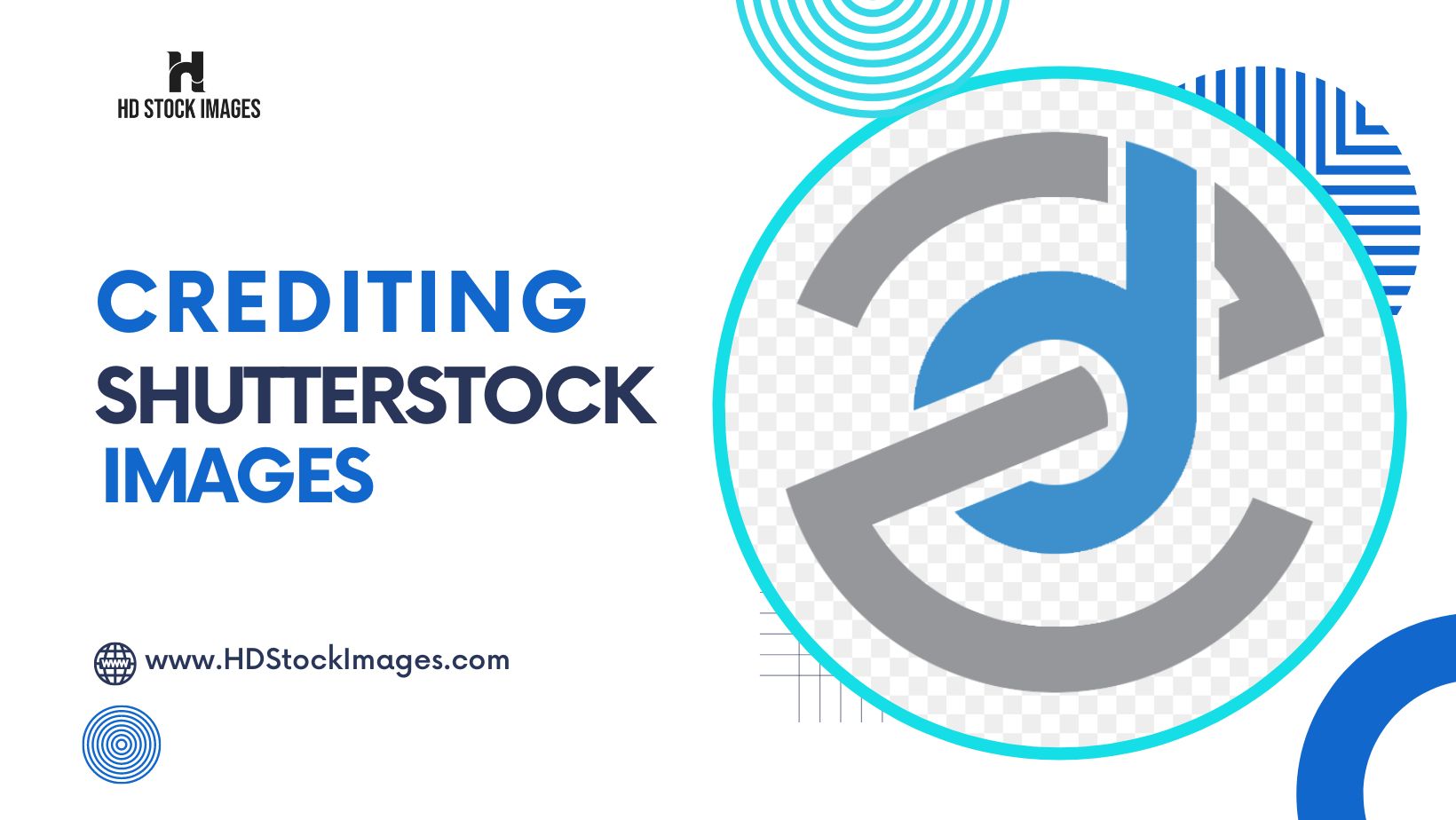Introduction:
Properly crediting Shutterstock images is crucial for maintaining ethical and legal practices in educational materials. Shutterstock, a widely used image resource, offers a vast collection of high-quality visuals. Understanding and adhering to their attribution requirements ensures respect for photographers’ work and copyright laws. This blog post aims to provide a comprehensive guide to understanding attribution requirements for Shutterstock images.By following guidelines for attribution placement, including necessary information, and utilizing automation tools, educators can seamlessly credit images in various educational materials. Appreciating the significance of accurate attribution not only avoids legal issues but also acknowledges the contributions of photographers, fostering a culture of respect for intellectual property rights.2. Guidelines for Properly Crediting Shutterstock Images:

1. Attribution Placement:
Include the image credit in a clear and visible location within your educational materials. Common placements include directly below or adjacent to the image, at the end of the document, or on a separate credits page.2. Necessary Information:
Ensure that the attribution includes the following essential details:a. Photographer’s Name or Shutterstock Username: Include the name of the photographer or the Shutterstock username associated with the image. This acknowledges the creator’s work and gives them proper credit.b. Shutterstock as the Image Source: Clearly state that the image is sourced from Shutterstock. This helps in identifying the origin and establishes compliance with licensing terms.c. Image ID or URL:Include the unique image ID or the direct URL of the image on Shutterstock’s website. This allows others to easily access and verify the image’s source.3. Examples and Templates:
Familiarize yourself with sample attributions and templates provided by Shutterstock. These resources can serve as guidance for crafting proper image credits and ensure consistency across your materials.4. Customize for Different Formats:
Adapt the attribution format to suit various educational materials. For PowerPoint presentations or printed materials, include the credit directly on the slide or page. In online courses or websites, consider incorporating the attribution in the image caption, alt text, or a designated credits section.5. Accuracy and Completeness:
Double-check the accuracy and completeness of the attribution information before publishing or distributing your educational materials. Ensure that all required elements are included, and verify the correct spelling of the photographer’s name or Shutterstock username.6. Regular Review and Updates:
Regularly review and update image credits to account for any changes or updates to the attribution requirements. Stay informed about any new guidelines or changes from Shutterstock to maintain compliance with their licensing terms.Remember, proper attribution is not only a legal requirement but also a way to show respect for the creative work of photographers. By following these guidelines, educators can ensure they are crediting Shutterstock images accurately and responsibly, fostering a culture of integrity and appreciation for intellectual property rights.3. Attribution for Different Types of Educational Materials:
1. PowerPoint Presentations and Classroom Handouts: – Place the image credit directly on the slide where the image is used. – Use a smaller font size or a different color to distinguish the attribution from the rest of the content. – Include the photographer’s name or Shutterstock username, Shutterstock as the source, and the image ID or URL.2. Online Courses and Learning Management Systems: – Add the attribution within the image caption or alt text field. – Consider creating a separate “Image Credits” section at the end of the course/module where all image attributions are listed. – Include the necessary information such as photographer’s name, Shutterstock as the source, and the image ID or URL.3. Educational Websites, Blogs, and Social Media: – Place the attribution directly beneath or adjacent to the image. – Incorporate the photographer’s name, Shutterstock as the source, and the image ID or URL. – Utilize hyperlinks to make it easy for viewers to access the original image on Shutterstock.4. Printed Materials and Handouts: – Include the image credit either directly below the image or on a separate credits page. – Make the attribution prominent by using a distinct font style or formatting. – Provide the photographer’s name, Shutterstock as the source, and the image ID or URL.Remember to adapt the attribution placement and format to suit the specific requirements of each educational material. The goal is to ensure that the credit is clearly visible, accurately represents the image’s source, and provides proper recognition to the photographer and Shutterstock.The View icemanphotos posted a photo: Buy my images on Adobe Stock Buy my images on ShutterStock Buy my images on Getty Images If you would like to see this in full size/no watermark. Contact me. icemanphotos © 2022, All… – https://t.co/1mgWsXfLk8 #poetry #education pic.twitter.com/AYIEwWUgwV
— Jonny Delta, (@mrJonnyDelta) March 7, 2022
4. Automation Tools for Image Attribution:
1. Image Metadata Editors: Use metadata editing software or tools to embed attribution details directly into the image file. This ensures that the attribution stays with the image, even if it’s downloaded or shared. Tools like ExifTool or Adobe Bridge allow you to add custom metadata fields for attribution information.2. Content Management Systems (CMS) Plugins: If you have an educational website or blog, consider using CMS plugins that automate the process of adding image attributions. These plugins can automatically generate image credits based on the metadata or designated fields you provide, saving you time and ensuring consistent attribution across your site. Examples include “Image Attribution for WordPress” or “Image Credits for Joomla.”3. Attribution Generators: Online attribution generators help streamline the process of creating image credits. These tools typically require you to input the necessary details such as the photographer’s name, image source, and image ID or URL. They then generate a properly formatted attribution that you can copy and paste into your educational materials. Pixsy’s Attribution Generator and Attribution-Generator.org are popular options.4. Watermarking Tools: Watermarking tools allow you to add a visible overlay on your images with attribution information. This ensures that the attribution remains intact even if the image is shared or used without proper credit. Tools like Adobe Photoshop, GIMP, or online services like Watermarquee provide features for adding watermarks with attribution details.5. Custom Scripts or Macros: If you have programming or scripting knowledge, you can create custom scripts or macros to automate the process of adding image attributions. These scripts can extract the necessary information from a designated source (such as a spreadsheet) and apply the attributions to your images in bulk. This approach is more advanced but can be highly efficient for large-scale attribution needs.When using automation tools, always review the output and ensure the accuracy and completeness of the generated attributions. Additionally, familiarize yourself with the specific requirements and limitations of each tool to ensure compliance with Shutterstock’s attribution guidelines and licensing terms.5. Common Attribution Mistakes to Avoid:
1. Failure to credit the photographer or Shutterstock: One of the most common mistakes is neglecting to provide proper credit to the photographer or acknowledging Shutterstock as the image source. Always ensure that both the photographer and Shutterstock are credited in your image attributions.2. Incomplete or inaccurate attribution information: Make sure that the attribution includes all the necessary details, such as the photographer’s name or Shutterstock username, Shutterstock as the source, and the image ID or URL. Double-check for any spelling errors or missing information that could compromise the accuracy of the attribution.3. Misunderstanding licensing requirements and using images without proper attribution: Be aware of the specific licensing terms and attribution requirements associated with the Shutterstock images you use. Using images without complying with the attribution guidelines can lead to copyright infringement issues. Familiarize yourself with the licensing terms and strictly adhere to the required attribution guidelines.4. Copying and pasting generic attributions: Avoid using generic attributions that are not specific to the image you are using. Each image should have its own unique attribution that properly identifies the photographer, Shutterstock as the source, and the relevant image ID or URL.5. Placing attributions in an inconspicuous or difficult-to-find location: Ensure that the attribution is easily visible and accessible. Placing it in a location that is difficult to find or read diminishes its effectiveness and may be considered insufficient. Make the attribution prominent and legible, either directly below or adjacent to the image or in a dedicated credits section.6. Failing to update or review attributions regularly: Keep your image attributions up to date and review them periodically. As new versions or revisions of your educational materials are published, verify that the attributions remain accurate and complete. Regularly review and update your attributions to reflect any changes in the licensing terms or attribution requirements.By avoiding these common attribution mistakes, you can ensure that you give proper credit to the photographers and Shutterstock, maintain compliance with licensing terms, and demonstrate respect for intellectual property rights.The following video is about Shutterstock images:6. Resources for Finding Image Attribution Information:
1. Shutterstock Website: Visit the Shutterstock website and access the image details page for the specific image you are using. The image details should provide the necessary attribution information, including the photographer’s name or Shutterstock username, Shutterstock as the source, and the image ID or URL.2. Image Metadata: Check the metadata embedded in the image file itself. Many images contain metadata that includes attribution details. You can view the metadata using software like Adobe Bridge, ExifTool, or other image editing tools.3. Shutterstock API: If you are using an application or platform that integrates with the Shutterstock API, you can programmatically retrieve the attribution information for the images you are using. The API provides access to various image details, including photographer information and attribution requirements.4. Creative Commons Search: If you are using Creative Commons-licensed images, you can utilize the Creative Commons Search tool. It allows you to search for images across different platforms and provides specific attribution requirements for each image.5. Image Reverse Search Engines: If you have come across an image without proper attribution, you can use reverse image search engines like Google Images or TinEye to locate the original source. Once you find the source, you can obtain the necessary attribution information.6. Contacting Shutterstock Support: If you are unable to find the attribution information through the above methods, you can reach out to Shutterstock’s customer support. They can assist you in obtaining the required attribution details for the image in question.Remember to document the attribution information for future reference and retain records of the sources and attributions used in your educational materials. Properly citing and documenting the attribution information demonstrates responsible usage and ensures compliance with licensing requirements.7. FAQs for Crediting Shutterstock images:
1. What is attribution?Attribution is the act of giving credit to the creator of a work. When you use a Shutterstock image, you are required to give attribution to the photographer or artist who created the image.2. Why is attribution required?Attribution is required for a number of reasons, including:
- To give credit to the creator of the image.
- To comply with copyright law.
- To help people find the original source of the image.
- To build trust and credibility with your audience.
- Include the photographer’s name and Shutterstock ID in the caption of the image.
- Link to the Shutterstock page for the image in the caption.
- Use the Shutterstock attribution widget.


